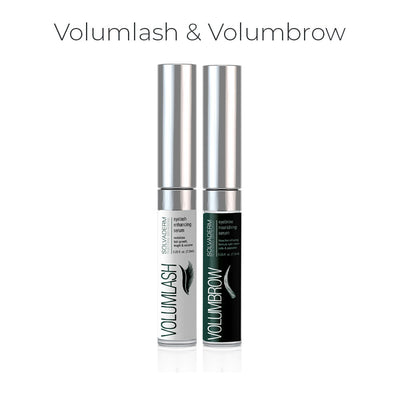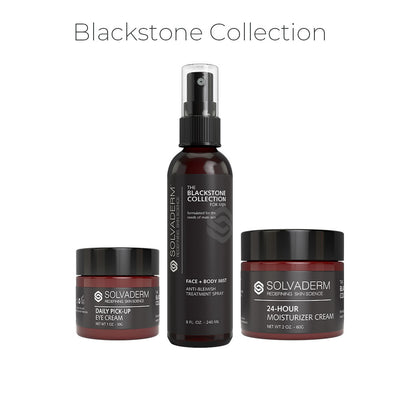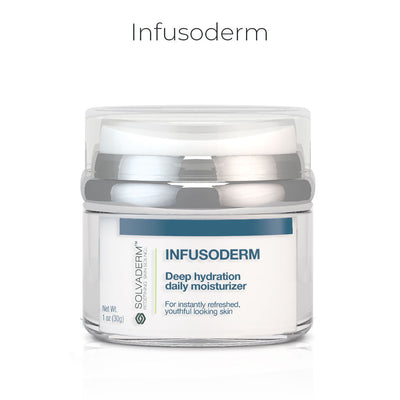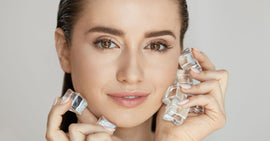The skincare industry is rapidly growing and there are a lot of products that you can use to maintain a clean, smooth, and radiant skin. Most of these skincare products have glycolic acid as one of its ingredients. It’s an acid that has many potential benefits for your skin, but you have to know how to use it and understand the risks. We will discuss what you can expect when using glycolic acid for skin.
Overview of Glycolic Acid?
Glycolic acid is an ingredient in some skincare products. It’s an alpha hydroxy acid that is naturally derived from sugarcane.
When you use glycolic acid on your skin, it primarily works as an exfoliant. This means it helps remove the outer layers of dead skin cells. Your skin is constantly making new cells, and as they reach closer to the top layer, dead skin cells start to collect on the surface of your skin. Glycolic acid helps to remove this layer.
The Main Characteristics of Glycolic Acid
Glycolic acid has several properties that make it a multi-purpose ingredient in skincare products. In this section, we’ll take a closer look at the main properties that the acid has - this will help you better understand the potential it offers and why so many people are using this ingredient.
-
Exfoliative: The exfoliative properties of the acid remove dead skin cells to make way for the new skin cells that are moving up to the surface.
-
Humectant: The humectant properties of glycolic acid also mean it helps to draw water into your skin. This makes glycolic acid a hydrating ingredient that helps ensure your skin doesn’t dry out.
-
Antibacterial: Glycolic acid also offers antibacterial properties, which means it can help kill bacteria that have collected on your skin. This is beneficial for people who struggle with acne, as bacteria are often involved.
-
Anti-aging: Another property of glycolic acid lies in the ingredient’s ability to reduce the signs of aging.
What are the Benefits of Using Glycolic Acid for The Skin?
Now that we’ve taken a closer look at the main properties of glycolic acid, it’s time that we consider what benefits you can expect from this ingredient. It’s important to understand that skincare products use different concentrations of glycolic acid, and may add additional ingredients alongside the acid.
Here are some glycolic acid uses and benefits that account for the importance of this chemical in skincare:
-
Acne: Glycolic acid has antibacterial properties. Studies have found that different concentrations of this acid are effective for the treatment of acne. When you have acne, bacteria tend to build up in your pores. Glycolic acid helps to destroy the bacteria, treats existing acne, and reduces flare-ups. This is why you’ll find that a lot of acne cream products contain this ingredient.
-
UV damage: Another major benefit of glycolic acid is its ability to help repair sun-damaged skin. You can even search for glycolic acid before and after pictures and see the wonders that this ingredient can do for skin that was burnt by UV rays.
-
Fine lines and wrinkles: Glycolic acid is a hydrating ingredient. It helps to draw more water into your skin - and when this happens, your skin won’t be dry and will look smoother. This, in turn, can be a great way to fade fine lines, as well as wrinkles.
-
Warts: Some people also find that glycolic acid products are great for the treatment of warts. However, a higher concentration of glycolic acid is needed for this purpose.
When and How Should You Use Glycolic Acid?
There are some risks when it comes to using glycolic acid. This is why it’s incredibly important to understand how you should use it. Even with the best toner for acne, cream for anti-aging such as Stemuderm Anti-Wrinkle Dermatological Treatment, or any other product that contains the ingredient, you’ll need to carefully follow the right instructions.
Let’s take a closer look at a couple of essential things that you have to keep in mind when using glycolic acid for skin.
-
Do a patch test: It’s possible to experience sensitivity or allergic reactions to this ingredient. That’s why you should first do a patch test. Apply a small amount of the product you want to use on the inside of your arm, and wait a few hours to see if any redness, swelling, or other symptoms develop. If you don’t notice any reactions, then you should be good to use the product.
-
Start slowly: If you haven’t used glycolic acid before, then you should start slowly. Don’t begin with a high-concentration serum right away. Instead, get a product that contains maybe 1% or 2% glycolic acid. This way, you can introduce your skin to the ingredients without causing reactions.
-
Choose one product: Don’t constantly switch between different products that contain glycolic acid. Pick a product and stay with it. If you don’t notice results immediately, give it some time. The ingredients take a while to give you noticeable results.
-
Use at night: It’s a good idea to stick to using glycolic acid products only at night. The best glycolic acid products may contain a high concentration of this ingredient, and that can make your skin more vulnerable to sun damage during the day.
-
Apply sunscreen: While glycolic acid is very effective at repairing sun damage, it can also make your skin more sensitive to UV exposure. Thus, while using these products, you must apply sunscreen regularly. Research suggests that you should especially focus on using sunscreen before and after treatments that contain high concentrations of glycolic acid.
How Does Glycolic Acid Compare to Other Acids?
There are a couple of acids that companies use in the production of skincare products. Glycolic acid is just one of these, and some people might wonder how it compares to other acids. To help you understand, let’s take a look at the differences between glycolic acid and other commonly used acids:
-
Hyaluronic acid: This acid is known to be particularly good for hydrating your skin. It helps the skin retain water more effectively and contributes to moisturization. Research papers also describe hyaluronic acid as an essential factor in the aging process.
-
Lactic acid: When you use lactic acid, it works on your skin’s natural ability to retain water, which means it also helps with hydration. It’s also known to be useful for smoothing out fine lines.
-
Salicylic acid: A great choice for people with acne, salicylic acid goes into your pores, refines them, and also shrinks the pores. It’s also a good option for exfoliating your skin.
Choosing the Right Glycolic Acid Products for Your Face
It’s important to understand that products with glycolic acid are the same. You need to do your research and take a closer look at the different available options. This way, you’ll be able to pick products that are appropriate for your skin.
-
Cleansers: When it comes to cleansers, consider one that has a glycolic acid concentration of about 1% to 2%. This way, you’ll be able to incorporate it into your daily routine.
-
Toners or face mists: A good toner can also help give you clear skin. Again, make sure there is only a very small concentration of glycolic acid if you want to use it regularly.
-
Liquid exfoliants: A liquid exfoliant can be a good choice, but make sure it’s appropriate for your skin. These exfoliants will usually have a higher concentration, so make sure you only use them once or twice per week.
-
Serums: Several serums contain this ingredient. Make sure you examine the entire list of ingredients, not just focus on the glycolic acid. Consider giving Glowpeel Dermal Exfoliation and Skin Resurfacing Repair Serum a try.
-
Moisturizers: You also need a good moisturizer to apply after you’ve cleansed your face. The moisturizer should have a low concentration of glycolic acid, as you likely want to use it daily.
-
Acne treatments: Glycolic acid is really good for acne. There are different kinds of treatments available such as Zeroblem Blemish Treatment Serum. Some can be applied regularly, whereas others are rather kept as a targeted treatment for cases where you have a breakout.
-
Face masks or at-home peels: If you prefer to use a face mask or maybe find yourself interested in doing an at-home peel, then it’s a good idea to opt for a higher concentration of glycolic acid. You shouldn’t use this kind of product regularly as it can be a bit harsher on your skin.
Are There Any Risks to Using Glycolic Acid for The Skin?
Now that we’ve taken a look at the benefits and how you can pick the perfect glycolic acid product, it’s time that we consider some of the risks that come with this ingredient.
If you’re asking a question like, “Can you use glycolic acid with retinol?”, it’s better to talk to your dermatologist first. It is important to be careful when mixing different ingredients as there might be a negative effect on your skin.
Apart from this, here are some of the side effects and risks that you need to consider when using anti-aging or acne skin care products that contain glycolic acid:
-
UV damage: Glycolic acid may cause your skin to be more sensitive to sun exposure. If you fail to wear a high-quality sunscreen while you’re using glycolic acid, it may increase the risk of skin damage due to UV rays.
-
Irritation: Some people also experience irritation when they use glycolic acid products. Fortunately, a patch test can usually help you understand if the ingredient is likely to cause irritation or other reactions.
-
Hyperpigmentation: Using glycolic acid products over your entire face instead of targeting specific dark areas can lead to hyperpigmentation.
Glycolic Acid FAQs
Can I use glycolic acid every day?
You can use glycolic acid daily only if the product has a concentration lower than 2%.
Does glycolic acid lighten skin?
Glycolic acid can lighten your skin by up to two shades. That’s because it helps to remove extra pigment that sits in the outer layers of your skin.
Will glycolic acid remove dark spots?
Glycolic acid is very effective for hyperpigmentation and helps you get rid of dark spots. However, it’s important to note that targeted treatments are usually needed for this benefit.
Which is better glycolic acid or salicylic acid?
It depends on your skin type. For acne-prone skin, salicylic acid is considered the better choice. If you want a good exfoliant, however, and you’re struggling with hyperpigmentation, then glycolic acid might be the ideal choice.
Key Takeaway
Glycolic acid is a type of AHA (alpha hydroxy acid) that’s used in skincare. It’s a great exfoliant and can help get rid of dead skin cells at the outer layer of your skin. However, there are a couple of risks and side effects that can sometimes happen, so it’s important to understand how you should use this acid properly.
References
1] https://www.ncbi.nlm.nih.gov/pmc/articles/PMC9943832/
2] https://www.ncbi.nlm.nih.gov/pmc/articles/PMC3875240/
3] https://www.ncbi.nlm.nih.gov/pmc/articles/PMC3583886/
4] https://www.ncbi.nlm.nih.gov/pmc/articles/PMC3080563/










